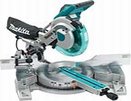
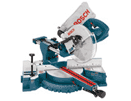
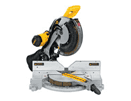 Most of us crafters love our miter saws like our first hound dog, like our own flesh and blood even, but despite this love, most of us don’t give our miter saws the attention they deserve. Accordingly, it behooves all of us to know not only how to take better care of our miter saws, but that it is really quite simple to do.
Most of us crafters love our miter saws like our first hound dog, like our own flesh and blood even, but despite this love, most of us don’t give our miter saws the attention they deserve. Accordingly, it behooves all of us to know not only how to take better care of our miter saws, but that it is really quite simple to do.
The first step to more properly caring for your miter saw is a little thing I like the call de-debris-ing, or simply removing any surface or loose debris from the tool. Using compressed air and paying special attention to the smaller pieces and moving parts on the saw, blow-off the tool to remove any straggling particles (of saw dust and/or other jobsite debris). Next, thoroughly wipe-down the tool with a clean and dry shop rag to eliminate any remaining debris.
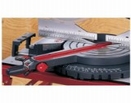 Next, you want to spend a little time buffing the saw’s cutting table and fences. Using a dry white Scotch-Bright pad (which can be purchased nearly anywhere from the grocery store to the hardware shop) and fluid circular motions, clean and shine the metal surfaces on the saw. Feel free to be a little more aggressive in problem areas and, if so inclined, you may also apply a bit of cutting-oil to the cutting surface in similar circular motions. If you’re feeling particularly gung-ho about the buffing process, you may also use an electric hand polisher to get your shine on.
Next, you want to spend a little time buffing the saw’s cutting table and fences. Using a dry white Scotch-Bright pad (which can be purchased nearly anywhere from the grocery store to the hardware shop) and fluid circular motions, clean and shine the metal surfaces on the saw. Feel free to be a little more aggressive in problem areas and, if so inclined, you may also apply a bit of cutting-oil to the cutting surface in similar circular motions. If you’re feeling particularly gung-ho about the buffing process, you may also use an electric hand polisher to get your shine on.
Now that the saw and its surfaces have been cleaned and consequently protected (yes, cleanliness is a huge part of regular preventative maintenance), you’ll want to focus on the moving parts on the exterior of the saw. Using just a few drops of an appropriate lubricant (i.e. turbine oil or pneumatic/air tool oil), lube the hinge on the back of the saw (that lifts the blade), the safety guard, the miter and bevel, and any other moving part on the body of the tool. Lubricating these pieces obviously enhances the tool’s performance and longevity, but it also helps maintain the saw’s overall cleanliness acting as a deterrent and barrier to saw dust, debris, and other such build-up.
 Next, you really ought to clean the blade. These suckers do quite a bit of hard work and certainly deserve a little refreshment in return. Using a softer wire brush, clean the blade with some standard toilet bowl cleaner (there is no need to dilute this solution) focusing on the teeth and ensuring you remove any pitch or other accumulations. Of course, if you have or prefer to use specialty blade cleaners, they will certainly get the job done – they’ll simply do it more expensively. Thoroughly dry the blade after cleaning.
Next, you really ought to clean the blade. These suckers do quite a bit of hard work and certainly deserve a little refreshment in return. Using a softer wire brush, clean the blade with some standard toilet bowl cleaner (there is no need to dilute this solution) focusing on the teeth and ensuring you remove any pitch or other accumulations. Of course, if you have or prefer to use specialty blade cleaners, they will certainly get the job done – they’ll simply do it more expensively. Thoroughly dry the blade after cleaning.
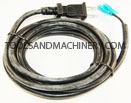
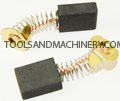
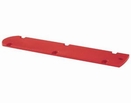 In the spirit of good maintenance, it is also and always smart to check-up on the saw’s kerf board(s), brushes and power cord. Look for chipping, breakage or cracks in the kerf board(s), for wear, breakage or crumbling on the brushes, and for any cracks, cuts or brakes in the power cord. If any of these components appear to have incurred the worse end of the wear and tear battle, replace them. These replacement procedures are comparatively simple, but, of course, you may always take the saw to an authorized service center for professional repair.
In the spirit of good maintenance, it is also and always smart to check-up on the saw’s kerf board(s), brushes and power cord. Look for chipping, breakage or cracks in the kerf board(s), for wear, breakage or crumbling on the brushes, and for any cracks, cuts or brakes in the power cord. If any of these components appear to have incurred the worse end of the wear and tear battle, replace them. These replacement procedures are comparatively simple, but, of course, you may always take the saw to an authorized service center for professional repair.
It is important to note here the danger of using a tool with a damaged power cord. It is extremely dangerous and can cause severe injury. Do not use a power tool with a damaged cord.
And finally, repeat the first step of this cleaning and maintenance regimen with each and every use of the saw
. The de-debris-ing is one of the most integral phases in the war against wear, tear, time, and use. Accordingly, keep the saw clean of dust and build-up, and the thing will continue performing at its most optimal level. How much better could your miter saw perform?













